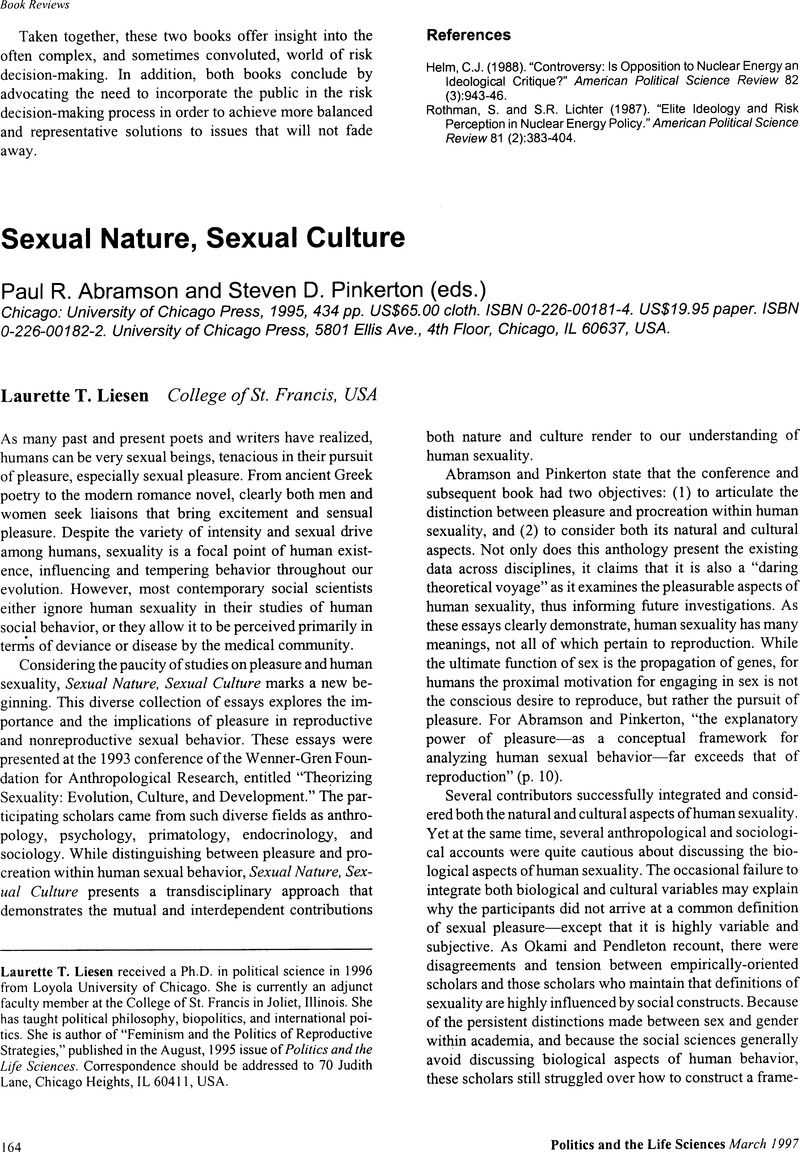Crossref Citations
This article has been cited by the following publications. This list is generated based on data provided by Crossref.
Smeaton, George
Anderson, Peter B.
and
Struckman-Johnson, Cindy
2025.
Proximal Motives of Sexual Arousal, Power, and Relationship for Sexual Aggression: Supporting the Millennial Shift.
The Journal of Sex Research,
Vol. 62,
Issue. 2,
p.
232.



